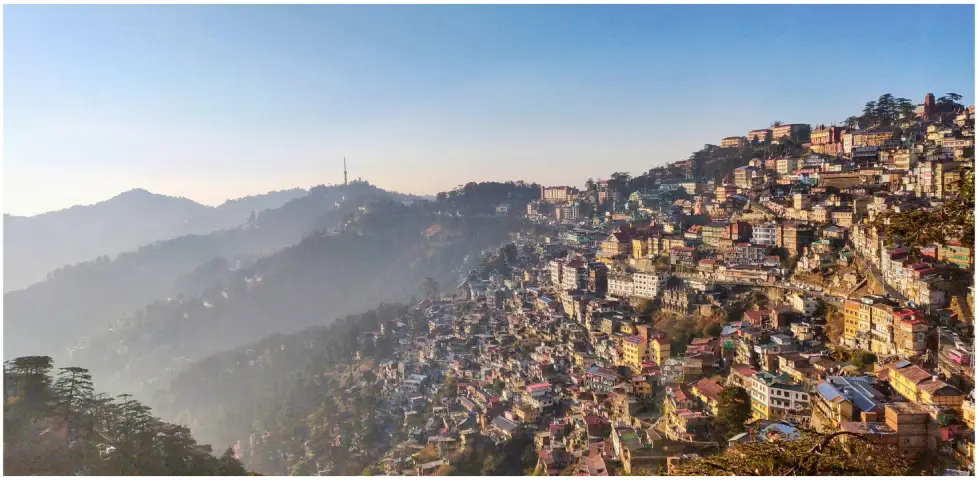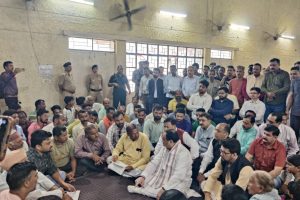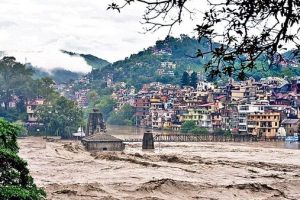Has Shimla crossed the limits of its sustainability and will the government wake up following massive destruction, building collapses, landslides and natural calamities in recent months?
The erstwhile summer capital of India, a tourist haven of international fame and colonial legacy, the Himalayan town –Shimla, is threatened by haphazard construction, unplanned growth of infrastructure and sinking spaces.
The monsoon rains, this time, has hit hard Shimla’s long term sustainability due to burgeoning population and heavy tourists influx that has led to construction of new hotels, hill cutting to widen the roads and blockade of natural drainage system, developed by the British, for soil stability and rain water flow.
A Preliminary Analysis of 2023 Monsoon Disasters in Himachal Pradesh, was compiled by a team of the Himalaya Niti Abhiyan—an organisation frequently highlighting issues of climate change and its impact has made a strong recommendation for a ban on high-rise buildings through-out the state and decongesting of the old towns like Shimla.
With vital inputs from multi-disciplinary experts viz Dr Ravi Chopra,Founder Director, People’s Science Institute (PSI), Dehradun, Dr Navin Juyal, an expert in Quaternary Geomorphology and Paleo-Climate, Himanshu Thakkar, environment and water expert, Dr Himanshu Kulkarni, Scientist Emeritus, ACWADAM, Sreedhar Ramamurthi, Earth Scientist and Trustee Environics Trust, Avay Shukla , former Additional Chief Secretary and Dr OP Bhuraita , a geomorphologist and treasurer, BGVS), the report recommends termination of hill cutting. It also calls for construction of buildings, which are disaster-resistant and holds structural safety.
State’s Chief Minister Sukhwinder Singh Sukhu admits that structural safety of the buildings have been compromised in Shimla as further blockage of the drainage system has led to over saturation of the soil, adversely affecting the conditions.
“There is a need to have a complete relook of the building planning process and ensuring structural safety for which a committee has been asked to make a study” he says
An expert committee of the Society for Environment Protection and Sustainable Development (EPSD) set-up by the National Green Tribunal (NGT) to carry-out the Environment Impact Assessment (EIS) study of Shimla’s 17 Green belts in 2013 had cautioned against any further damage to the hill ecosystem in Shimla.
Of 12 major recommendations, which the committee made included a complete ban on all types of construction activities in the entire planning area of Shimla including 17 green belts. This should uniformly apply to the government and private buildings, the committee said.
“But, this was not just a wake-up call up and alarm. Shimla has exceeded its carrying capacity by 150 percent since 2009-10.What happened between August 13 to 16 was forecasted by the experts, NGT, Himachal Pradesh High Court and also the Town and Country Planning” says Dr Suresh Attri, a principal Scientist and climate change expert at HP Department of Environment and Climate Change.
Last month, the Union Ministry of Environment, Forests and Climate Change (MoEFCC) had also endorsed the proposal of the Supreme Court to undertake a comprehensive study of 13 Himalayan towns facing landslides, land subsistence and are crumbling under their weight.
Earlier on August 21, the Supreme Court had mooted constituting an expert panel for conducting a “complete and comprehensive” study on the carrying capacity of the Himalayan region in the country, where unplanned development has caused devastation in recent times, terming it a “very important issue”.
In 2015, Himachal Pradesh High Court had also shown a red flag to Shimla’s burgeoning constructions, new institutional buildings, multi-storey hotels and high rise commercial buildings, mostly illegal.
Another committee set-up by the National Green Tribunal to study Shimla’s carrying capacity in 2016-17, had also noted that most buildings are highly unsafe, built on unstable and sinking slopes, and will collapse. This could result in a significantly high human loss, which is difficult to estimate.
“A large number of buildings are constructed over land with slopes exceeding 45 degrees, and in certain cases the buildings are constructed on the slopes exceeding 70 degrees. Subsidence of land in a number of areas and landslides are becoming frequent as climate change may act as an amplifier,” said the report.
The report suggested an urgent need to decongest and depopulate Shimla, particularly areas like Sanjauli, Dhali, Tutu and Lower Lakkar Bazar. All institutions, including the defense establishments, which are not required to operate from Shimla, must be relocated to the plains or other areas, the report reads.
Sanjauli in Shimla ~ waiting for a disaster….
How can the mountains sustain this kind of mindless development…?#Himanchal #shimla #disaster #mountains #HillStation #urbanisation pic.twitter.com/Uz2chNiQWk— Neeraj Mishra (@NrjNambo) August 9, 2023
The British era town—which became the summer capital of India in 1864, was proposed for a population of 25,000 but now the population of Shimla is almost 2.75 lakh and there are 20,000 buildings—which are unauthorised, raised in violation of the building norms and even without approved plans. Sixty percent of these either fall in the sinking zones or built over blocked drainage channels and traditional water bodies.
Also Read: Massive rains, landslides, floods and house collapse force closure of schools, colleges in Himachal




















